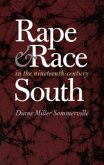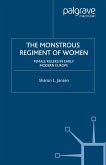This book is a major history of the dramatic and enduring changes in the daily lives of poor European women and men in the nineteenth century. Rachel G. Fuchs conveys the extraordinary difficulties facing the destitute from England to Russia, paying particular attention to the texture of women's everyday lives. She shows their strength as they attempted to structure a life and set of relationships within a social order, culture, community, and the law. Within a climate of calamities, the poor relied on their own resourcefulness and community connections where the boundaries between the private and public were indistinguishable, and on a system of exchange and reciprocity to help them fashion their culture of expediencies. This accessible synthesis introduces readers to conflicting interpretations of major historic developments and evaluates those interpretations. It will be essential reading for students of women's and gender studies, urban history and social and family history.
'The contributors to this volume are all leading scholars who have written extensively on specific aspects of the Parthenon, and their essays are not only authoritative syntheses of their own earlier work but also form an engaging assessment of current research, problems, and directions for future study. This valuable book is clearly intended for advanced students and established scholars and succeeds admirably in providing a thoughtful overview and summary of the state of Parthenon studies at the beginning of the 21st century.' Kevin Glowacki, American Journal of Archaeology








